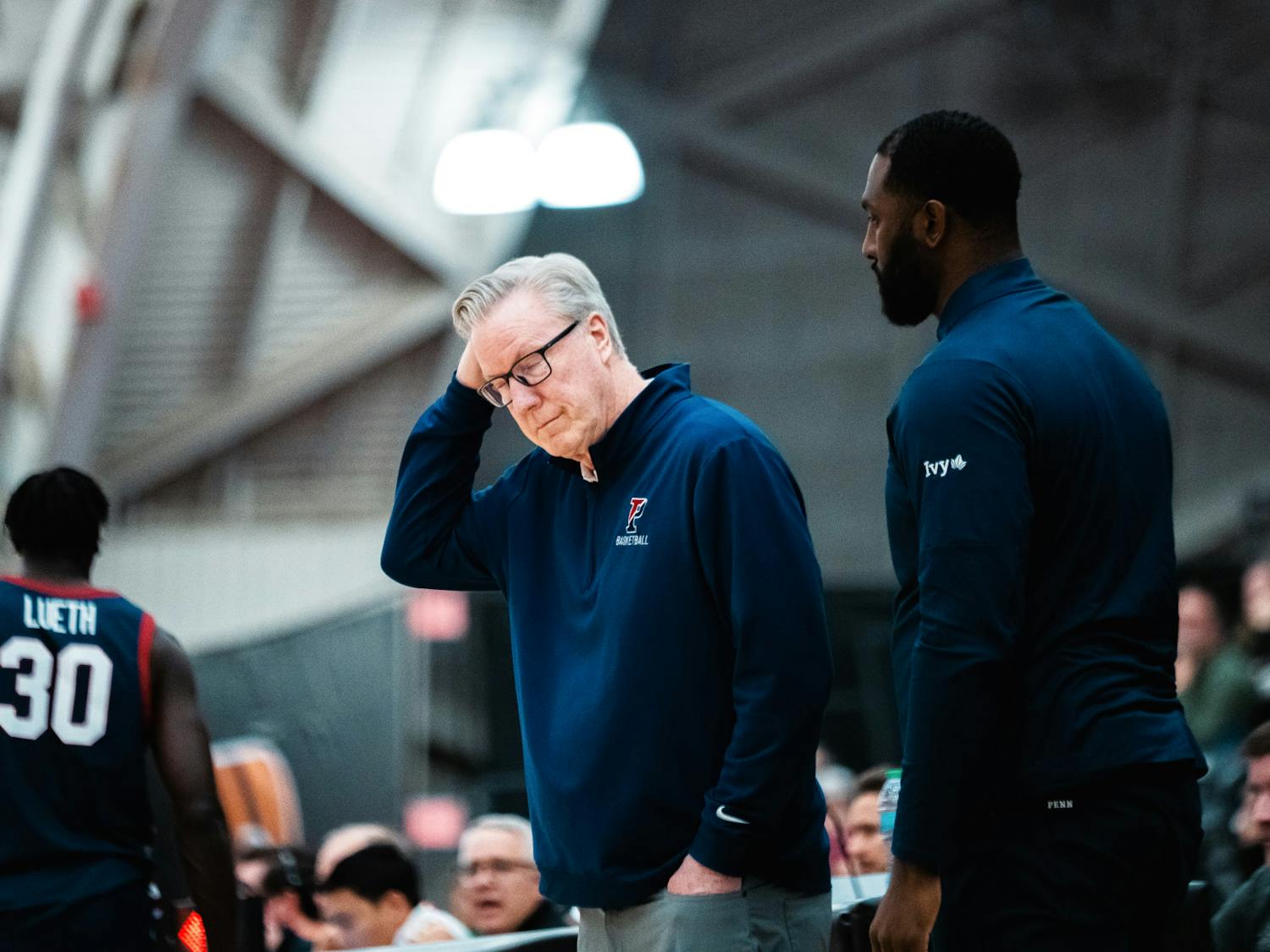Back in 1895, Penn officials thought it would be a good idea to organize a track event on campus to rejuvenate the sinking interest in the Penn track team.
They did not know what they were creating.
They could not have known their public relations move would evolve into the premier non-championship outdoor track weekend in the nation. Foreseeing that athletes from Montana to Montego would all converge onto Franklin Field to strut their stuff would have been impossible.
The Penn officials simply could not have predicted that 109 years later, the Penn Relays would be the only event of the year that would see Franklin Field significantly filled. And filled not only with typical track and field fans, but also with celebrities in the sports and entertainment industries.
Prolific actor and comedian Bill Cosby, Philadelphia's Pat Croce, gold-medalist hurdler Gail Devers and countless unscheduled luminaries will come to witness the spectacle and experience the palpable history of the Penn Relays.
"I am always surprised at who shows up," Penn Relays Director Dave Johnson said. "But at the same time not really surprised because you know someone will show up... it's an event that has that kind of appeal."
Here are the Penn Relays, 109 years later.
But the Relays have not been static with the changing times; rather, it has evolved over the years, constantly improving on previous ones.
In fact, the current name of Penn Relays Carnival was not used until 1910, when the festive atmosphere provided by tents set up around the perimeter of Franklin Field could no longer be ignored.
"The people at Mardi Gras have nothing on you," said George Lyons, Vice President of PECO, the 2003 Penn Relays presenting sponsor.
On the track side of the event, what started out as a day of eight total events instantly burgeoned, quadrupling the following year and topping off at 425 events this year.
The prominent improvements in the Relays came concurrently with the development of Franklin Field into a more fan- and athlete-friendly stadium. In the introductory years, things were so bad that temporary dressing rooms had to be set up outside the facilities because there were none yet on the inside.
Even though the origins were humble, the event certainly did not go unnoticed. The Relays began 25 years before the first NCAA Championship, and so during that period, each relay event was recognized as the "Championship of America." It was the only time that enough major contestants were brought together.
In 1915, a major change occurred, as the relays were extended to a two-day event.
"Almost every year, there is growth and expansion, but this was one of those certain tip-points," Johnson said. "We threw in more events to fill it up... it was a major undertaking which required more of everything."
International athletes brought notoriety to the Relays as early as 1914, when an Oxford University team won the four-mile relay. When Oxford and Cambridge sent a combined team to West Philadelphia in 1920, the Penn Relays drew what was then the second maximum capacity crowd of 30,000 people in Franklin Field history and had to send another 5,000 fans away.
The middle part of the 20th century was marked by more Franklin Field improvements. In 1951, the inside track was introduced, and 1967 was the first year athletes began competing on an all-weather track.
"Now, we had good performances in wet weather and a much firmer track than the one that got chewed up after hours of use," Johnson said. "These allowed and forced several administrative changes that on the outside appear rather insignificant, but had a large effect."
"Franklin Field and the Penn Relays are two of the biggest draws for a track athlete in the United States," Penn track coach Charlie Powell said. "Franklin Field is one of the storied venues by far... it's one of the fastest and the finest."
Women's events began at the Penn Relays with a 100-yard dash in 1962, and in 1978, Penn Relays Director and men's track coach Jim Tuppeny instituted a full day of women's events, which continues to this day. Johnson called Tuppeny's move "the most significant change in the past 30 years."
Of course, the tradition continues to evolve. The true tradition of the Penn Relays could be characterized by nothing less than continual change. This year's festivities will receive unprecedented television coverage, highlighted by an hour-long feature on Friday on Philadelphia's CN8 and features and live coverage from 3:30 p.m.-6 p.m. on Saturday afternoon on NBC10.
Fan attendance will surely top 100,000 for the fourth year in a row, a far cry from the 5,000 who attended the first relays in 1895.
Over 20,000 athletes, about half of whom are high schoolers, will fill the lanes of the Franklin Field track from 35 states and provinces and six foreign countries.
"The Penn Relays is track and field at its purest sense," said Penn Athletics Compliance Coordinator Elton Cochran-Fikes, a Penn track record-holder. "It's deserving of the kind of respect and admiration that the Super Bowl gets."
"Breaking a record at the Penn Relays gives you better exposure than anywhere else," South Carolina track coach Curtis Frye said. "We know we are going against the best."
The 1983 Poor Richard's Record sums up the sentiment of this exciting weekend: "The Penn Relays Carnival is more than just another large track event. There is a special spirit among the people which binds the spectators, competitors and officials in mutual camaraderie. Every walk of life is touched -- that's the nature of the Penn Relays."








